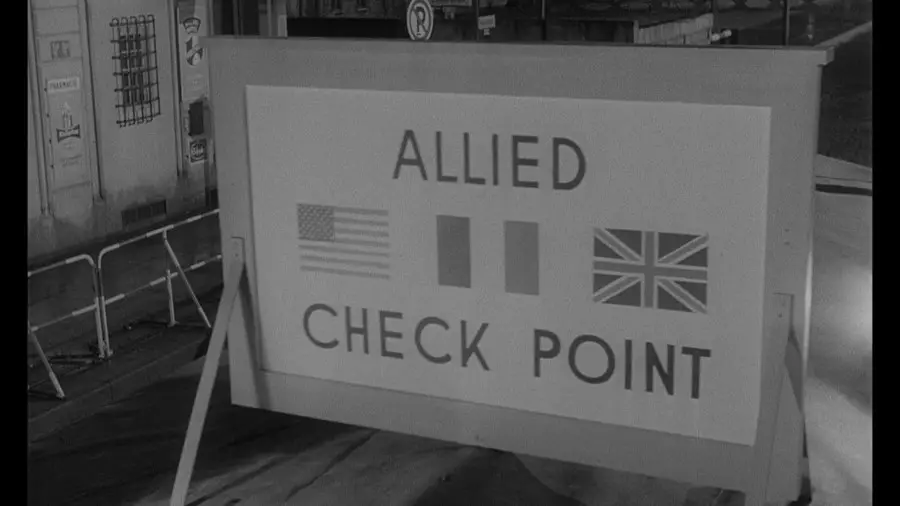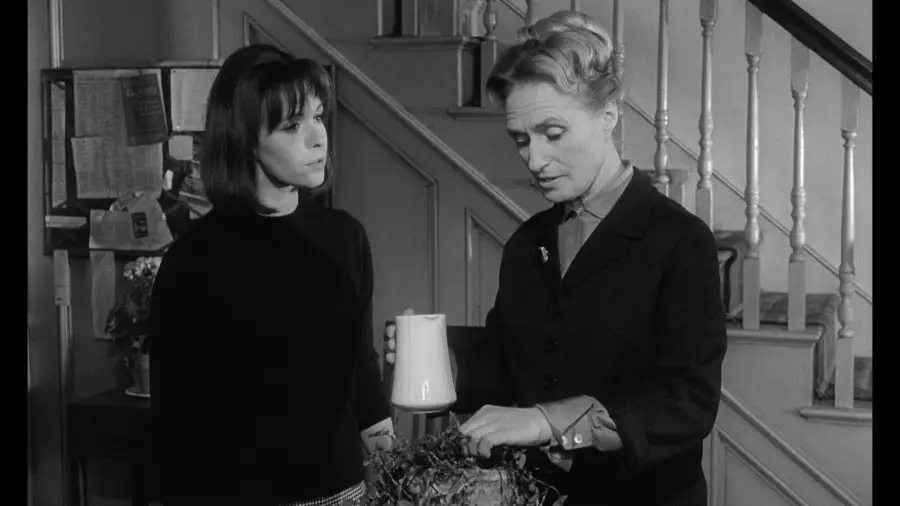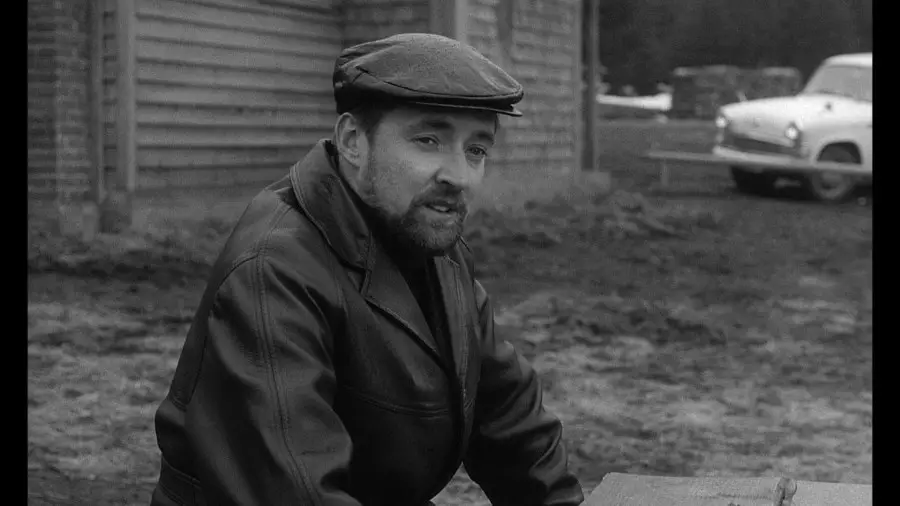The Spy Who Came in from the Cold

See more details, packaging, or compare
Synopsis
The acclaimed, best-selling novel by John le Carré, about a Cold War spy on one final dangerous mission in East Germany, is transmuted by director Martin Ritt into a film every bit as precise and ruthless as the book. Richard Burton is superb as Alec Leamas, whose relationship with the beautiful librarian Nan, played by Claire Bloom, puts his assignment in jeopardy. The Spy Who Came in from the Cold is a hard-edged and tragic thriller, suffused with the political and social consciousness that defined Ritt’s career.
Picture 9/10
The Criterion Collection upgrades their DVD edition of Martin Ritt’s The Spy Who Came in from the Cold to Blu-ray, again presenting the film in its original aspect ratio of 1.66:1. The film is delivered in a 1080p/24hz high-definition transfer on a dual-layer disc.
Using what looks to be the base transfer for the DVD, Criterion delivers a wonderful, filmic presentation. The image is consistently sharp with very fine details coming through clearly without issue, like the fine striping on the cross-hatch pattern on Burton’s jacket. There are no artifacts of note, with the image coming off very clean. The aforementioned cross-hatching pattern could have led to moiré effects but there are none present. Film grain is clearer here than it was on the DVD but it’s naturally rendered and never happy. Contrast looks fairly decent with rich blacks and distinct gray levels.
The source materials are still in excellent condition, all of those scratches that were obvious on the Paramount DVD are still gone. Interestingly, though, some damage is more obvious on this Blu-ray in comparison to the DVD: some minor marks and tram lines not visible on the DVD are faintly visible here. Criterion’s booklet for the DVD notes that DVNR was used on its transfer so I suspect that (and the mix of a lower resolution) hid some of the issues. It doesn’t appear much if any filtering has been applied here so some of these very minor marks and very faint tram lines do make an appearance. That’s not to say this presentation is worse, it just appears that the digital transfer here is so much sharper and cleaner these minor blemishes are now more obvious.
Criterion’s DVD was impressive but this high-definition upgrade offers an impressive and substantial improvement, delivering a richer, film-like presentation.








































Audio 8/10
The lossless PCM stereo soundtrack delivers a rich experience. Music is spread out nicely and almost sounds to be newly recorded. It’s sharp with excellent range and fidelity, without any signs of age or distortion. Dialogue can be a bit flat and does show its age in comparison but it’s still clear and easy to hear. Yet despite this one weak aspect the track as a whole is impressive.
Extras 9/10
Criterion’s 2-disc DVD edition was a wonderful upgrade to Paramount’s barebones release and thankfully Criterion has ported everything over to their new Blu-ray edition.
The first feature is an interview with John le Carré, recorded exclusively for Criterion. I’ll say firstly that the supplements on this disc are all great, but when it comes to the one I found most fascinating it would probably be this one. Interestingly a disclaimer found on the DVD, pointing out that all comments made in the features do not reflect those of Criterion or Paramount, is not included here. It was surprising to see such a thing on a Criterion DVD release, but I think I can see why it was there originally: Le Carré is very frank and honest. He doesn’t say anything altogether that bad, but while talking about his experience with the making of the film he gives his direct opinions about the Hollywood scene and his misgivings about the film (a little slow, too noirish, Burton has too much of a “Thesp” voice) though overall he likes it. He also gets into issues with Burton who had trouble working with Martin Ritt (apparently Ritt stood up to Burton, which is confirmed in other features found on this disc, and Burton may not have been used to this,) the tensions because of a previous affair Burton had had with co-star Claire Bloom, and the fact Elizabeth Taylor and her entourage were there as well. Ritt also used le Carré in some fashions to try and control Burton. He does get into other details about the film but he also goes past the making of the film and does discuss the novel and his work as a spy, though briefly. As a whole, though, it’s a very quick 39-minutes. I’ve actually never seen an interview with John le Carré/David Cornwell and I have to say he is an absolutely fascinating interview subject.
And that continues on with the next feature, The Secret Centre: John le Carré, a 59-minute documentary made for the BBC about John le Carré/David Cornwell (I’ll be honest, I’m not completely sure how to address the man, either by his real name or pseudonym and throughout this feature people address him both ways, but I’ll just address him by his pen name, John le Carré.) It’s made up primarily of interview clips with le Carré but also gets interviews with people who knew him (or of him) including professors, friends, and even spies from the other side of the wall. The documentary goes over his early life, having been recruited as a spy at a very young age (one of his assignments involved investigating Soviets recruiting students from prestigious schools), working for MI5 and then MI6, and then how he was asked to leave after becoming a celebrity with the publication of The Spy Who Came in From the Cold. Le Carré offers some anecdotes about his spy years, and he also talks about Kim Philby, a double agent who exposed many British spies, including le Carré. He offers the influences for his writing, Philby seeming to have been a big influence, and even offers a great examination of one of his recurring characters, George Smiley. Mixed into all of this is archival footage (including footage of the Berlin wall being built then torn down) and clips from films based on le Carré’s work. I suspect it was made somewhat as a promotion for what would have been his new book at the time, The Constant Gardener, but discussion on this novel only takes up the last bit of the documentary. The rest is actually not only a fascinating examination of the author but of the spy world as well. I strongly recommend watching this one. It is presented in anamorphic widescreen and has been divided into 6 chapters.
The next feature comes from audio recordings of an interview with director Martin Ritt taken by film historian Patrick McGilligan for an article he wrote for the February 1986 issue of Film Comment. It runs 49-minutes and is divided into 3 chapters. Ritt talks about being blacklisted and the lack of work he could get and then his filmmaking with Fox during the late 50’s. He also gets into a discussion about political films and the rough time he had being a very liberal filmmaker working in Hollywood at the time. There’s also a long discussion about the current state of Hollywood films (and while they are referring to filmmaking in the 80’s the comments are still relevant for today) and the few artists that are out there. In all it’s an excellent interview. It’s presentation is an audio clip playing over a chapter selection menu.
Oswald Morris, the film’s director of photography, offers a selected-scene commentary for the film. For those not familiar with this type of commentary it’s just a commentary that plays over a select number of scenes instead of the whole film, similar to Criterion’s commentaries found on Andrei Rublev and Le doulos. He only speaks over the opening sequence, a couple of sequences involving Nan (Bloom) and Leamas (Burton), the strip club sequence, the tribunal scene, and the ending. He’s technical for the most part, talking about the intense planning behind just about every sequence, the lighting, movements, and set designs, and how he tried to make the film look as “downbeat and awful as possible.” But he also comments on the cast and offers a lot of information about Martin Ritt, a director he seems to have greatly respected (Morris states that he worked on a lot of Richard Burton films and Ritt was the only director that tried to control him, and did for the most part.) It’s actually unfortunate that this is only a brief commentary track but it’s at least quite informative and worth viewing. The commentary runs about 40-minutes and has been divided into 5 chapters.
Below this feature you will next find a gallery of Set Designs presenting a number of drawings (all quite moody) that you can navigate through using the arrows on your remote.
Finally, closing off the disc, is an interview with Richard Burton from 1967 program called Acting in the 60’s. It’s a somewhat stuffy interview clouded by cigarette smoke but it gives an adequate background examination of Burton and his work. He talks about his young years, theater work, and his work with Fox that he considers artistically uninteresting but did it because he liked “being famous.” There’s also some discussion on Elizabeth Taylor’s part in teaching him how to act for the screen. It may be my least favourite supplement on this release but for those interested in Burton’s work it’s worth viewing. It runs about 34-minutes and has been divided into 6 chapters.
The features close with the film’s original theatrical trailer. A 12-page booklet is also included featuring an essay by Michael Sragow offering an analysis on the film, the novel, the author of the novel, and the director and star of the film. He also covers some of the issues that occurred on the set between Burton and Ritt.
Like with Criterion’s DVD they’re an excellent selection of supplements all worth the effort of going through.
Closing
Criterion’s Blu-ray upgrade delivers the same supplements as the DVD but offers a noticeable and impressive improvement over it, coming with a high recommendation.







